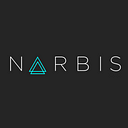Photobiomodulation May Prove an Effective Treatment for Alzheimer’s, Depression, Stroke
From our ancestors’ discovery of fire, to the invention of the electric lightbulb, to harvesting sunlight as a renewable energy source, part of the human condition has always centered around harnessing the power of light to shape and improve our way of life.
And yet, these innovations have just scraped the surface; we are only now starting to uncover the potential of light to radically transform our lives as we know it.
New technologies are using specific wavelengths of light to heal, enhance, and energize the cells in our bodies. Also known as photobiomodulation (PBM), this breakthrough technology has been shown to reduce inflammation, increase blood circulation, and boost cellular energy.
PBM uses red or near-infrared light to stimulate, heal, regenerate, and protect cells and tissue that has either been injured, is degenerating, or is at risk of dying. PBM also helps healthy cells function more efficiently. Cosmetically, PBM devices have been approved by the FDA to stimulate hair growth and decrease fat deposits. PBM devices are also used to alleviate acne and reduce skin wrinkles from aging and sun damage.
And in recent years, science is revealing PBM’s benefits for the brain. A review of PBM research by Michael R. Hamblin, PhD a principal investigator at the Wellman Center for Photomedicine at Massachusetts General Hospital, found evidence that seemingly diverse brain disorders (traumatic events such as stroke, degenerative diseases like Alzheimer’s, and psychiatric issues like depression) can be improved by applying light to the head. He noted there is even the possibility that PBM could be used for cognitive enhancement in normal healthy people.
Initial clinical studies of photobiomodulation’s effect on Alzheimer’s have shown a reversal of neurodegenerative decline for severe Alzheimer’s patients without any side effects. Hoping to earn FDA approval based on this research, early-stage company, JustLight has invented a PBM medical device, Sunflower Rx, which “automatically adjusts LED Light output to replicate clinical parameters, delivering precise and effective photobiomodulation treatment for patients with Alzheimer’s,” according to the company’s website.
Other recent research has looked at combining neurofeedback with photobiomodulation which can assist with improvements of executive functioning while improving cellular health, and the initial results are astounding.
How Does Photobiomodulation Work?
According to the American Society for Laser Medicine & Surgery, in photobiomodulation:
‘A light source is placed near or in contact with the skin, allowing the light energy (photons) to penetrate tissue where it interacts with chromophores located in cells resulting in photophysical and photochemical changes that lead to alterations at the molecular, cellular and tissue levels of the body.
Light induces a complex chain of physiological reactions in diseased and damaged tissues to accelerate wound healing and tissue regeneration, increase circulation, reduce acute inflammation, reduce acute and chronic pain and help restore normal cellular function. Interestingly, recent research indicates that light can enhance performance in normal tissues and cells.’
Light Therapy Throughout History
Light therapy, though now being tapped as a novel treatment for certain disorders, has actually been used for many generations. Ancient Greeks had their own version called “heliotherapy” (exposure to natural sunlight) which was touted to “cure weak and flabby muscles” and increase muscle size by Greek physicians such as Antyllus and philosophers such as Herodotus. More recently, an outdoor 4-week heliotherapy session was shown to significantly clear Psoriasis symptoms in 84 percent of subjects.
Future Technology will Combine Light, Sound, and Color Therapy
Narbis, the creator of neurofeedback smart glasses created to improve focus, is planning to introduce a new product later this year — Illume — to entrain the brain towards a desired state, like flow, sleep, or meditation.
Just like other waves of energy, brainwaves have a range of distinct wavelengths. Lower frequencies put you in a relaxed, meditative, or drowsy state; higher frequencies keep you engaged, focused, and alert. And, through techniques like seeing specific patterns of flashing lights or listening to two intentionally distinct frequencies (like binaural beats), we can manipulate our brainwaves to change our mood, or give our brain a ‘tune-up.’
Parting Thoughts
As pharmaceutical interventions continue to fail to adequately treat devastating diseases like Alzheimer’s and Parkinson’s, new photobiomodulation therapies offer a ray of hope to the patients and their families ravaged by brain disorders.
What’s even more astounding is the fact that PBM technologies may also offer cognitive enhancement to healthy people, too, not to mention the promising combination of light therapy with other proven therapies like neurofeedback to help your brain shift gears to improve mood on demand.
It’s an exciting and hopeful time to see what comes next for this ancient-yet-cutting-edge technology of light therapy.
# Light Therapy #Photobiomodulation# Light as Medicine# Light and Alzheimers# Lightwave Treatment
